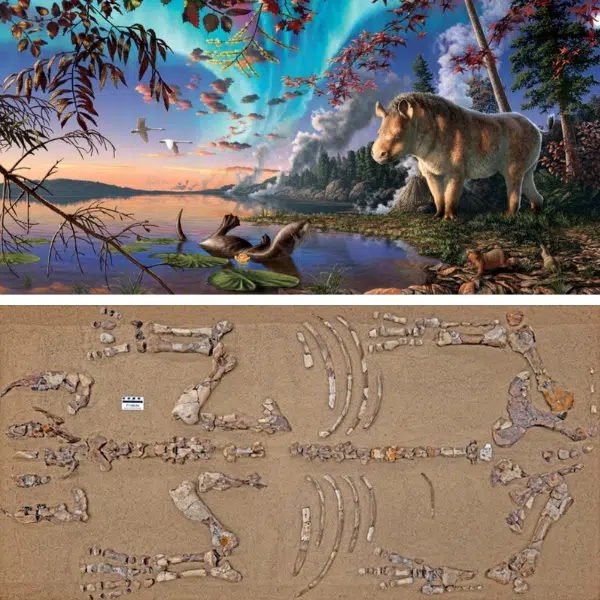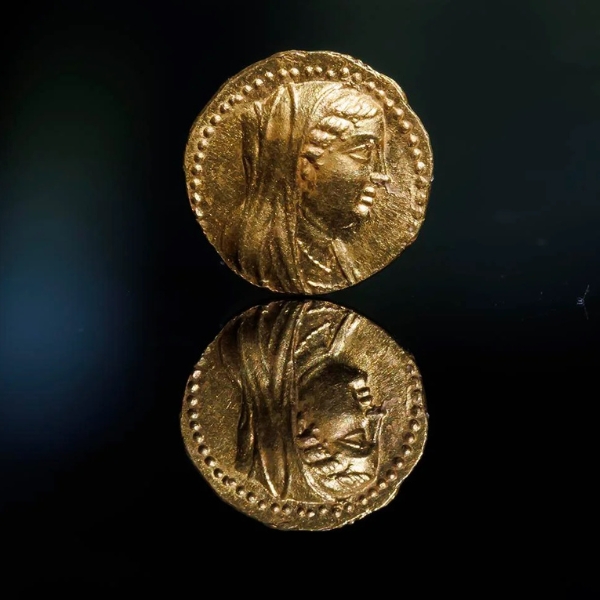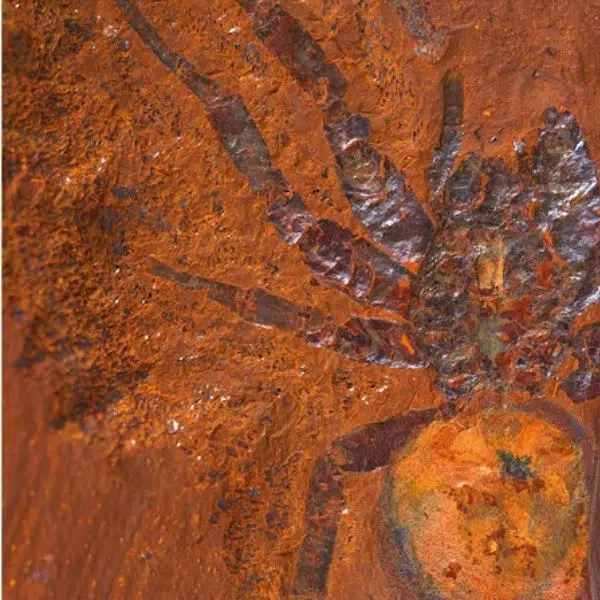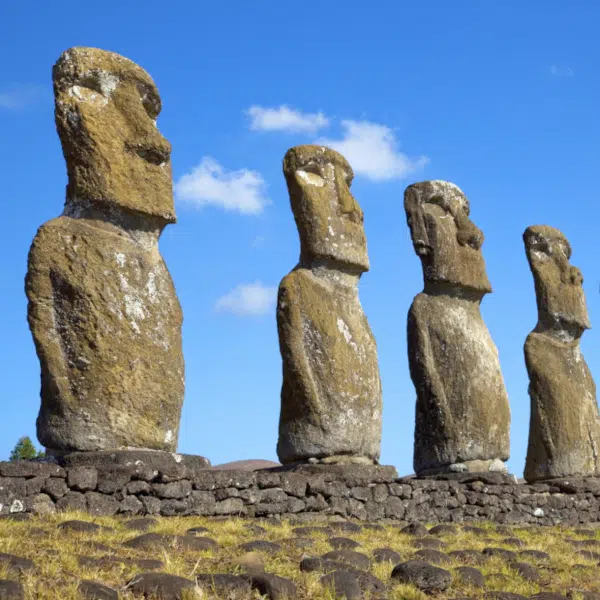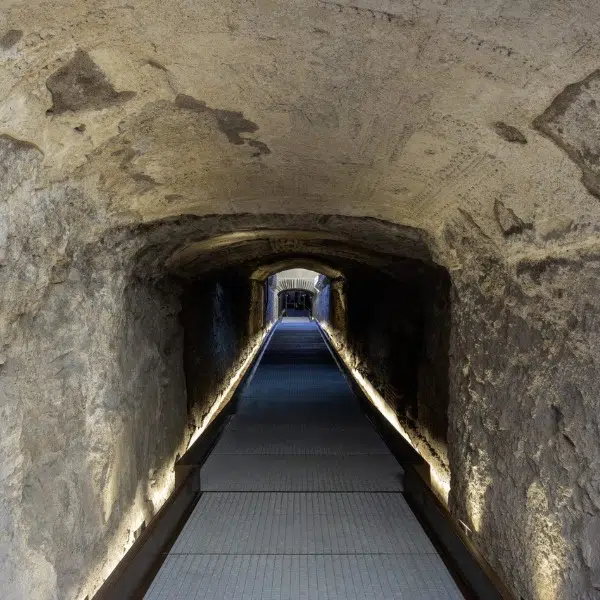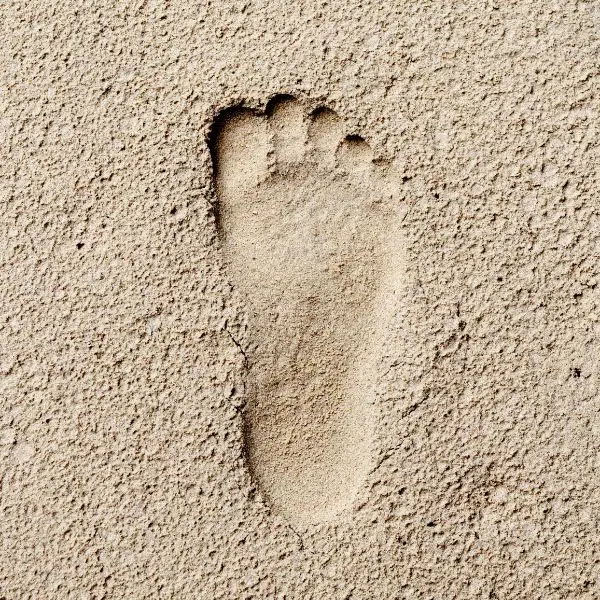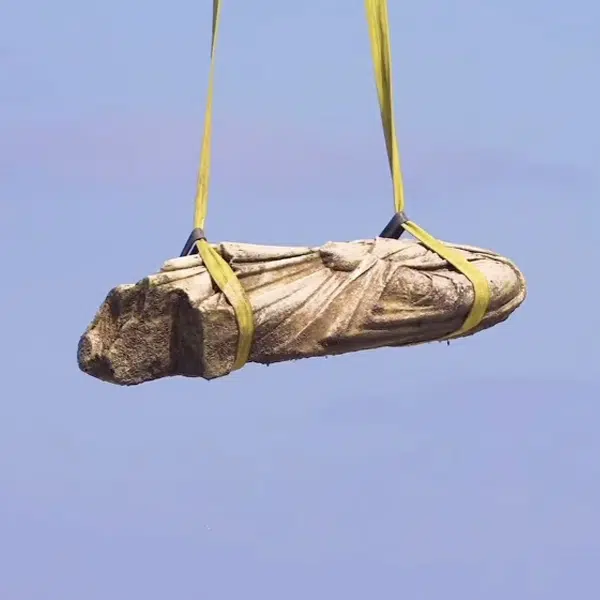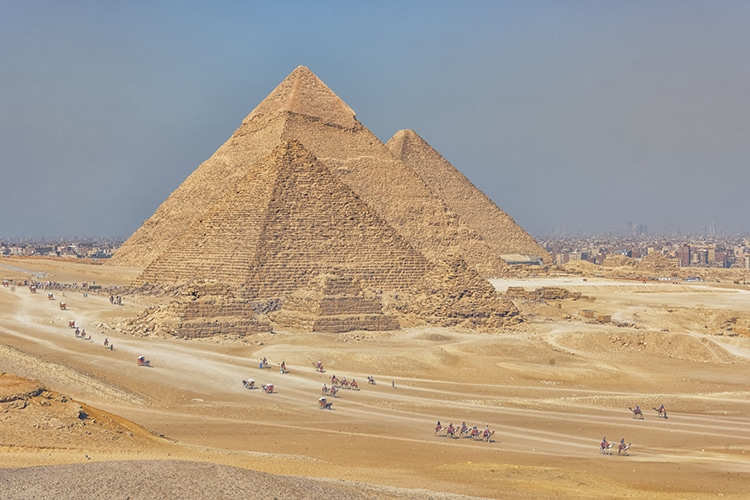
Photo: MANJIK/Depositphotos
The pyramids have stunned onlookers for centuries. The Great Pyramid of Giza, in particular, is one of the seven wonders of the ancient world—and the only one still standing for modern eyes to observe. Giza, Egypt, is home to the Great Sphinx and pyramids enshrouding ancient pharaohs. A cluster of 31 pyramids in the desert region has always presented a difficult question: how did ancient architects build these monuments, with millions of hewn stone blocks weighing multiple tons each? While archeologists have long speculated that ancient Egyptians used water to carry the weight of the blocks, a new study has illuminated a forgotten branch of the Nile River that adds the missing link.
Researchers from the University of North Carolina Wilmington, in their own words, used “radar satellite imagery, in conjunction with geophysical data and deep soil coring, to investigate the subsurface structure and sedimentology in the Nile Valley next to these pyramids.” They were therefore able to investigate the landscape throughout time, seeing how it has evolved into the dry sand-covered plain it is today. They discovered the presence of an ancient, buried riverbed that once ran alongside the 31 pyramids. Named the Ahramat branch, after the Arabic word for pyramids, this waterway was an offshoot of the Nile that ran for 39 miles and stretched up to about 2,296 feet wide. This powerful waterway is likely how the ancient builders floated their blocks of stone, teams of workers, and other cumbersome transports to the sites of the pyramids.
“Nobody was certain of the location, the shape, the size or proximity of this mega waterway to the actual pyramids site,” study author Professor Eman Ghoneim told the BBC. The pyramids in the region were constructed between 3,700 and 4,700 years ago, while the river branch was flowing. Eventually, the river branch would be buried under the desert. The Ahramat Branch is not the only ancient path of the Nile's waters to be discovered by archeologists, according to the paper. Uncovering ancient waterways explains the locations of structures and movement of ancient peoples.
This newest discovery, beyond enlightening researchers who study the pyramids and technological prowess of ancient Egypt, also offers the tantalizing hope of more structures to be discovered which once sat along the ancient riverbank.
The discovery of traces of the Ahmarat Branch—an ancient branch of the Nile River—sheds light on just how the ancient Egyptians managed to build their monumental pyramids at Giza.
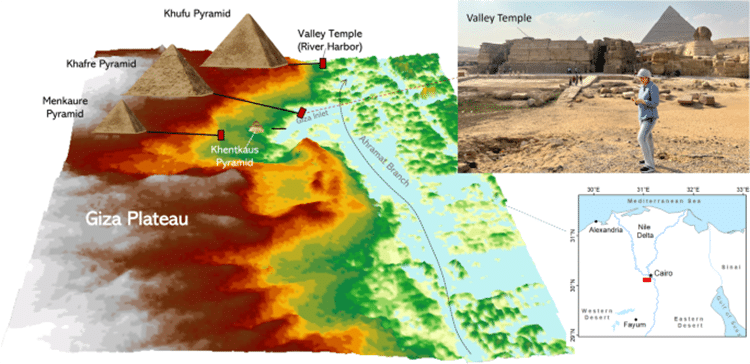
Pyramid causeways and the Giza Inlet. (Photo: Author Eman Ghoneim/Ghoneim et al.)
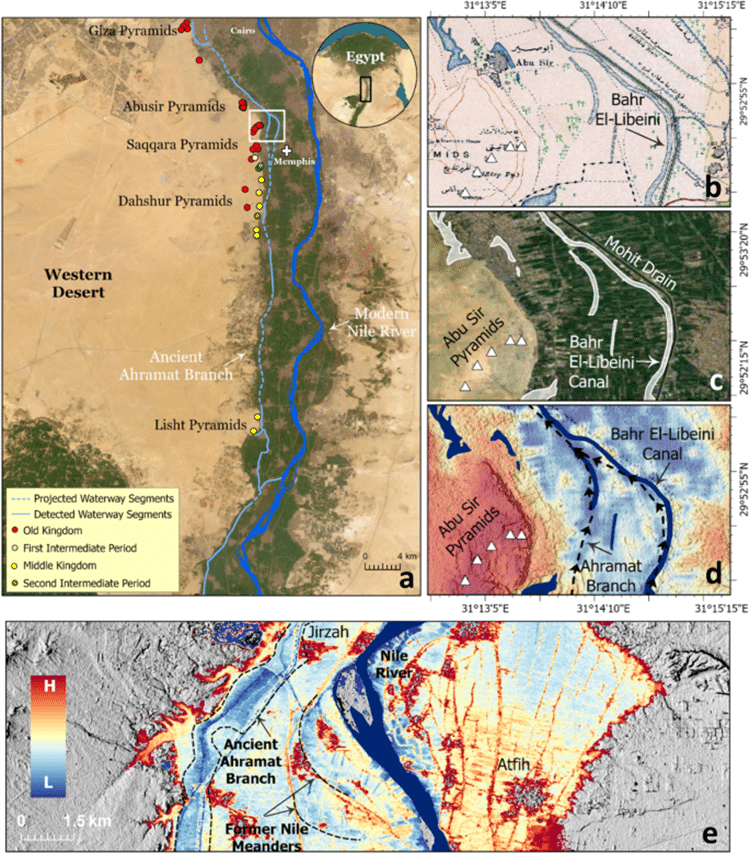
Depiction of the ancient Ahramat Branch on modern maps. (Photo: ESRI World Image Basemap, source: Esri, Maxar, Earthstar Geographics/Ghoneim et al.)
h/t: [BBC]
Related Articles:
Art History: Ancient Practice of Textile Art and How It Continues to Reinvent Itself
Sister Duo Weaves Textured Wall Hangings Inspired by Australian Landscapes
How to Crochet: Learn the Basics of This Time Honored Handicraft
Artist Fills Forest with Life-Size Sculptures Made from Woven Rods of Willow











































































